Introduction
During the summer of 1944 the allied forces which had landed in Normandy on 6 June 1944 spread out in France. For a moment the liberation of Western Europe from the Nazis within a couple of weeks seemed likely. In the beginning of September 1944 Brussels and Antwerp had already been liberated by British XXX Corps of Lieutenant-General Brian Horrocks. It did not take long before the allied forces were at the Belgian-Dutch border.
Now there were two different outlooks on how to continue the battle. The allied supreme-commander Dwight Eisenhower wanted to attack Germany on a broad front. The British Field Marshall Bernard Montgomery preferred to advance through Holland to the IJsselmeer and then move into Germany. This way the German troops in the West of Holland would become isolated and the Siegfried Line, a strong defence line, could be avoided. Thus the war would probably be over before Christmas of 1944. In the end Eisenhower granted Montgomery permission to work out his plans for this operation in detail. This operation was to be called: Operation Market Garden.
Operation Market Garden
Operation Market Garden consisted of two parts. ‘Market’ was the code name for the actions of the airborne troops. 'Garden' was the code name for the actions of the ground forces. The key to the success of this kind of operation were the airborne troops. According to plan three allied airborne divisions would jump over the area of Eindhoven, Nijmegen and Arnhem and then clear the way for British XXX Corps which was at the Belgian-Dutch border in the area of Neerpelt. During the first day XXX Corps would have to join the airborne troops at Eindhoven. These troops would join the airborne troops at Nijmegen on the second day and at Arnhem on the third day.
The Battle of Arnhem
The British 1st Airborne Division under the command of Major General Robert Urquhart would land in the area of Wolfheze and Oosterbeek. The most important order for the division was to take the road bridge in Arnhem and occupy the bridge for at least 48 hours until XXX Corps arrived from the south.
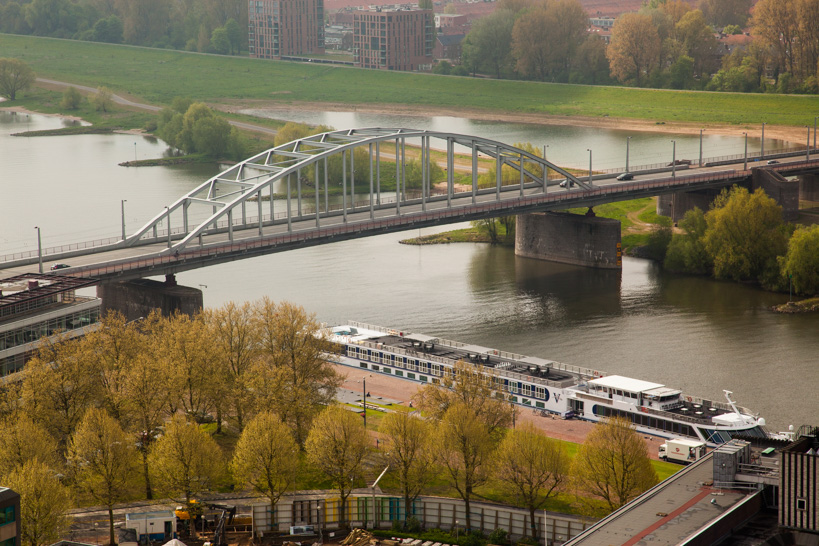
The John Frost bridge
On 17 September the first British paras landed on DZ (Drop Zone) X and the first gliders landed on LZ (Landing Zone) Z and LZ S. Later the British would get assistance from the Polish 1st Independent Parachute Brigade under the command of Major-General Stanislaw Sosabowski. By following this route you will pay a one-day-visit to the most important places of interest in the sector of the Battle of Arnhem.
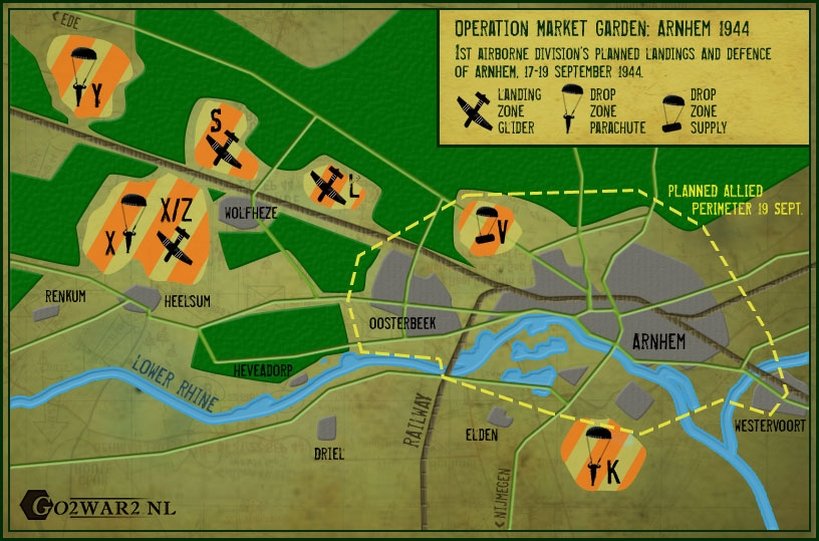
During the summer of 1944 the allied forces which had landed in Normandy on 6 June 1944 spread out in France. For a moment the liberation of Western Europe from the Nazis within a couple of weeks seemed likely. In the beginning of September 1944 Brussels and Antwerp had already been liberated by British XXX Corps of Lieutenant-General Brian Horrocks. It did not take long before the allied forces were at the Belgian-Dutch border.
Now there were two different outlooks on how to continue the battle. The allied supreme-commander Dwight Eisenhower wanted to attack Germany on a broad front. The British Field Marshall Bernard Montgomery preferred to advance through Holland to the IJsselmeer and then move into Germany. This way the German troops in the West of Holland would become isolated and the Siegfried Line, a strong defence line, could be avoided. Thus the war would probably be over before Christmas of 1944. In the end Eisenhower granted Montgomery permission to work out his plans for this operation in detail. This operation was to be called: Operation Market Garden.
Operation Market Garden
Operation Market Garden consisted of two parts. ‘Market’ was the code name for the actions of the airborne troops. 'Garden' was the code name for the actions of the ground forces. The key to the success of this kind of operation were the airborne troops. According to plan three allied airborne divisions would jump over the area of Eindhoven, Nijmegen and Arnhem and then clear the way for British XXX Corps which was at the Belgian-Dutch border in the area of Neerpelt. During the first day XXX Corps would have to join the airborne troops at Eindhoven. These troops would join the airborne troops at Nijmegen on the second day and at Arnhem on the third day.
The Battle of Arnhem
The British 1st Airborne Division under the command of Major General Robert Urquhart would land in the area of Wolfheze and Oosterbeek. The most important order for the division was to take the road bridge in Arnhem and occupy the bridge for at least 48 hours until XXX Corps arrived from the south.

The John Frost bridge
On 17 September the first British paras landed on DZ (Drop Zone) X and the first gliders landed on LZ (Landing Zone) Z and LZ S. Later the British would get assistance from the Polish 1st Independent Parachute Brigade under the command of Major-General Stanislaw Sosabowski. By following this route you will pay a one-day-visit to the most important places of interest in the sector of the Battle of Arnhem.

| # | Punt | Bezienswaardigheid | ||||||||||||||||||||||||||||||||||||||||||||||||||||||||||||||||||||||||||||||||||||||||||||||||||
|---|---|---|---|---|---|---|---|---|---|---|---|---|---|---|---|---|---|---|---|---|---|---|---|---|---|---|---|---|---|---|---|---|---|---|---|---|---|---|---|---|---|---|---|---|---|---|---|---|---|---|---|---|---|---|---|---|---|---|---|---|---|---|---|---|---|---|---|---|---|---|---|---|---|---|---|---|---|---|---|---|---|---|---|---|---|---|---|---|---|---|---|---|---|---|---|---|---|---|---|---|
| A | Startpunt | Airborne Memorial Ginkelse Heide | ||||||||||||||||||||||||||||||||||||||||||||||||||||||||||||||||||||||||||||||||||||||||||||||||||
Although the Ginkel Heath was used for the first time on the second day of Operation Market Garden this is a good starting point. As an alternative you can also start at the Airborne Museum "Hartenstein" and get back on route here.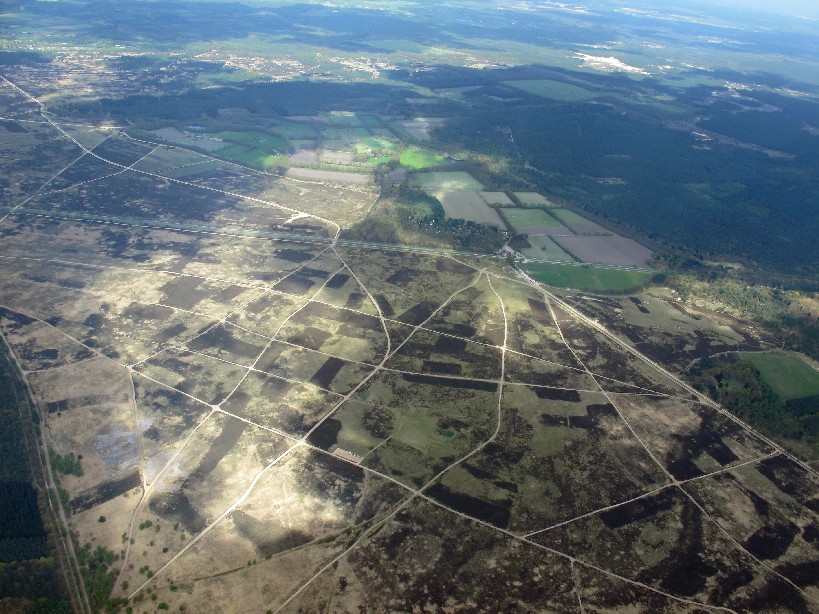 On 18 September 1944 the paras of the 4th Parachute Brigade dropped down on Ginkel Heath, known as DZ Y during the Battle of Arnhem. Troops of the 7th Battalion King's Own Scottish Borderers (KOSB) succeeded in conquering the DZ just in time. The German troops which used the Zuid Ginkel Inn as headquarters were overpowered or fled. This allowed the 4th Parachute Brigade to land without too many difficulties. On this second day of the operation the fighting at Arnhem bridge was already difficult. Still no reinforcements had been able to reach the location. So, immediately after they landed the 11th Parachute Battalion of the 4th Parachute Brigade was directed to the bridge. At about 1.5 km from the bridge they were brought to a halt by German troops. Several memorials on the elevation near the sheep pen are a reminder of the Battle. The memorial with the bird on top is a tribute to the soldiers of the 7th Battalion King's Own Scottish Borderers (KOSB). Each year on the Saturday of the remembrance weekend the airborne landing is commemorated here at Ginkel Heath. Often hundreds of paratroopers from different countries jump at this event. 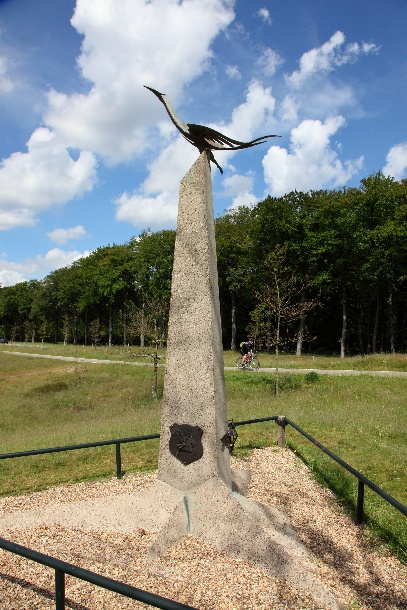  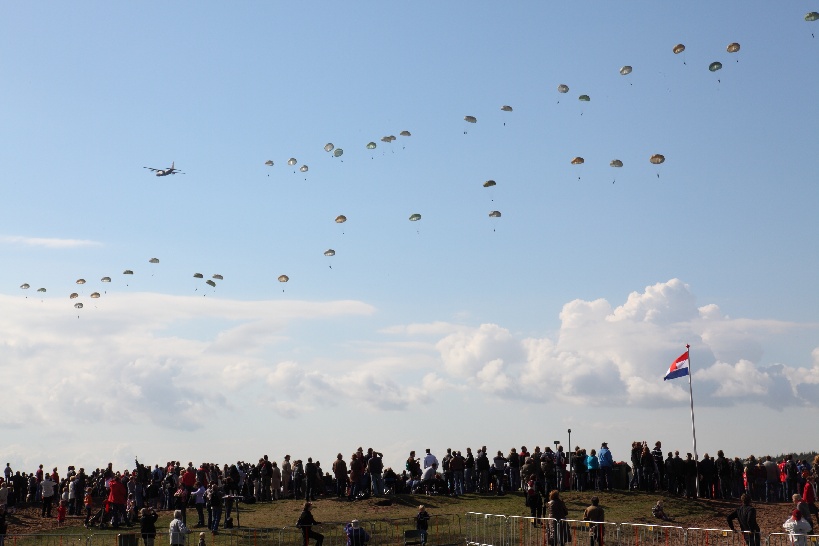 | ||||||||||||||||||||||||||||||||||||||||||||||||||||||||||||||||||||||||||||||||||||||||||||||||||||
| B | Waypoint | Glider Landmark Wolfheze | ||||||||||||||||||||||||||||||||||||||||||||||||||||||||||||||||||||||||||||||||||||||||||||||||||
We now return to the locations of the first day of the operation, 17 September 1944. Near the bridge at Arnhem there were no large open areas which could meet the criteria for landing- en dropzones of the British military command. That is why they selected areas west of Wolfheze / north of Renkum. At the entrance of the camping sites there is monument in the shape of a landing Horsa Glider. On the opposite side of the road is LZ S, the first landing ground that was used here.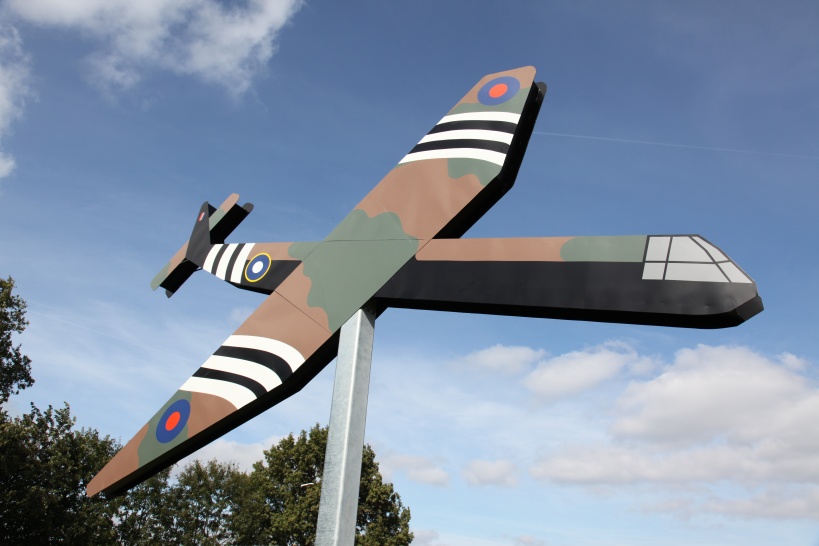 During the first and the second lift the 1st Airlanding Brigade made up of the 7th Battalion King's Own Scottish Borderers (KOSB), the 1st Battalion, Border Regiment (Borders) and the 2nd Battalion, South Staffordshire Regiment (Staffords). During the first day these units had orders to protect the landing zones and drop zones for the next lifts. After that they could help in defending the area around Arnhem and Oosterbeek. On 19 September 1944 Dakota KG374 crashed in the middle of LZ-S. The aeroplane of 271 squadron came from Down Ampney. The mission was to drop supplies for the Airborne troops at Arnhem. The aeroplane was hit by flak in the Nijmegen area. This caused the starboard engine to catch fire. The pilot F/Lt. David Lord decided to move on and complete his mission. He noticed that Supply Dropping Point V was in German hands and dedided to drop his load at Landing zone S. Immediately after the load had been dropped, Lord ordered his crew to bail out of the plane. Right after this the starboard wing of the plane broke off and the plane crashed. Only navigator Harry King survived the crash. He joined the paras of 10th (Sussex) Parachute Battalion. The next day he was taken prisoner of war. On 13 November 1944 David Lord was posthumously awarded the Victoria Cross for his valour during this mission. | ||||||||||||||||||||||||||||||||||||||||||||||||||||||||||||||||||||||||||||||||||||||||||||||||||||
| C | Waypoint | Landing Zone / Drop Zone X | ||||||||||||||||||||||||||||||||||||||||||||||||||||||||||||||||||||||||||||||||||||||||||||||||||
On 17 September 1944 the 1st Parachute Brigade landed here on DZ X (the area west and partly east of the Telefoonweg). On 18 September 1944 this area was used as LZ X for the gliders of the second lift with divisional units. Further east of the Telefoonweg is LZ Z, on 17 September 1944 the gliders with divisional units of the first lift landed here. Amongst others was General Roy Urquhart.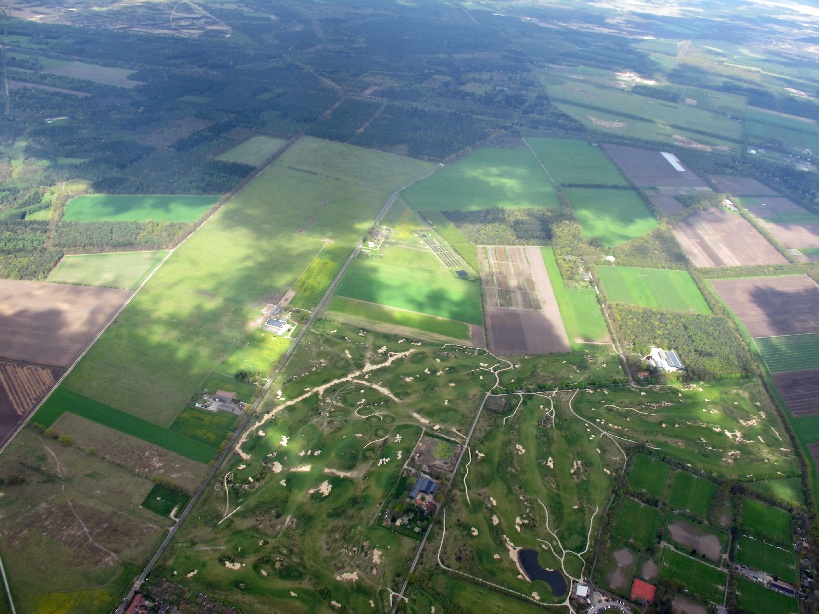 DZ / LZ X is on the left, LZ Z is on the right From these areas the airborne troops took different routes in the direction of Arnhem. The paras of 2nd and 3rd battalion of the 1st Parachute Brigade took the southern routes towards the bridge. The first battalion would go to Arnhem-North via the Amsterdamseweg. The Reconnaisance Squadron went by jeep along the railway track to Arnhem. Soon they were caught in an ambush. 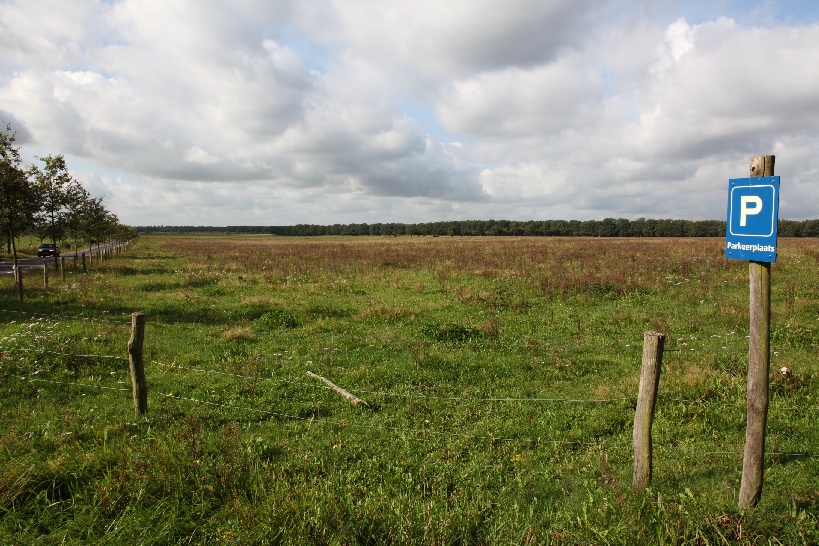 LZ X seen from the North Between the village of Wolfheze and Landing zone Z there is a mental home. During the attacks on the railway yard preceding the first landing on 17 September 1944 many patients were killed. | ||||||||||||||||||||||||||||||||||||||||||||||||||||||||||||||||||||||||||||||||||||||||||||||||||||
| D | Waypoint | Airborne Memorial Heelsum | ||||||||||||||||||||||||||||||||||||||||||||||||||||||||||||||||||||||||||||||||||||||||||||||||||
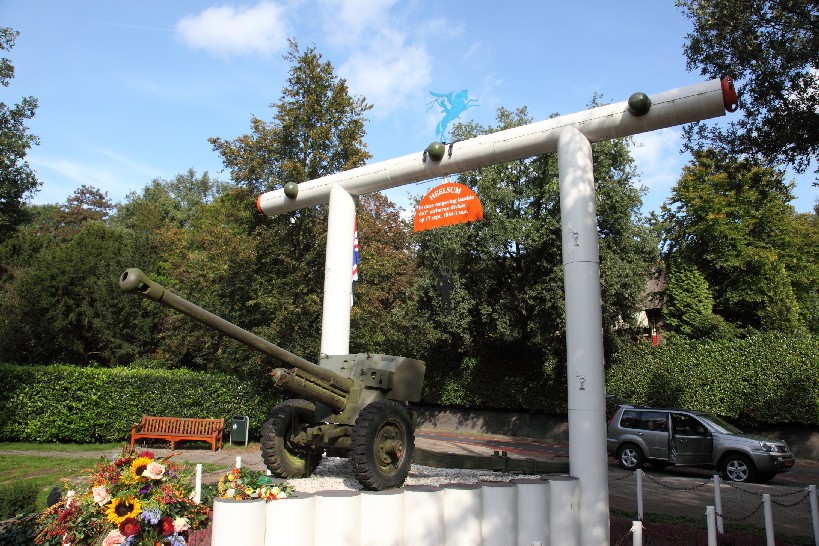 This monument was the first monument in the region that was erected by the civilian population to comemmorate the Battle of Arnhem. The monument is made out of WW2 related items that were found in the surrounding area. | ||||||||||||||||||||||||||||||||||||||||||||||||||||||||||||||||||||||||||||||||||||||||||||||||||||
| E | Waypoint | Restaurant Westerbouwing | ||||||||||||||||||||||||||||||||||||||||||||||||||||||||||||||||||||||||||||||||||||||||||||||||||
The Westerbouwing is an area of high ground west of Oosterbeek and on the northern bank of the Rhine where a restaurant is situated. Just after the perimeter in Oosterbeek had been formed, the 1st Battalion, The Border Regiment held this strategic position. From this position the ferry could be guarded. On Thursday 21 September 1944, the day the Polish 1st Independent Parachute Brigade would drop at Driel, the Westerbouwing was captured by German troops. Therefore the ferry could no longer be used by the airborne troops.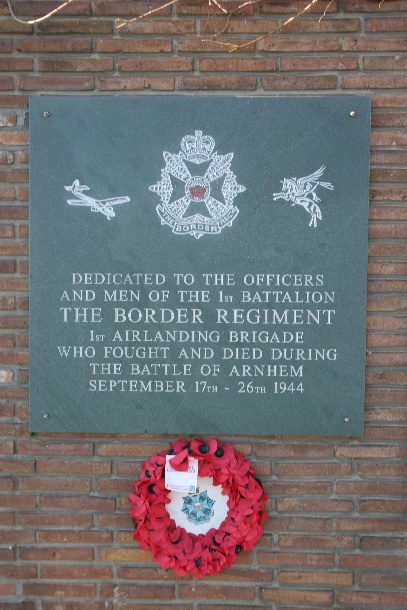 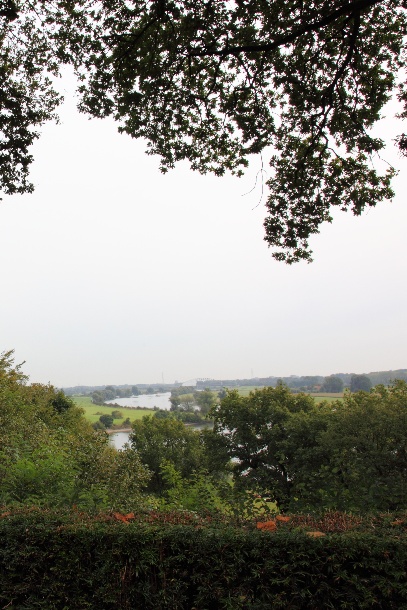 At the location of the present restaurant several plaques and memorials can be found, such as a plaque for the 1st Battalion, The Border Regiment. The terrace offers a great view over the Rhine river and the railway bridge, the foot ferry and Driel. | ||||||||||||||||||||||||||||||||||||||||||||||||||||||||||||||||||||||||||||||||||||||||||||||||||||
| F | Waypoint | Old Church Oosterbeek | ||||||||||||||||||||||||||||||||||||||||||||||||||||||||||||||||||||||||||||||||||||||||||||||||||
After the airborne troops had been forced to give up the bridge, a perimeter around Oosterbeek was formed. An area which could be defended by the remaining troops. Here at the old church the perimeter reached the Rhine. The idea was that as long as a bridgehead on the north bank of the river could be held, reinforcements could be brought in from over the Rhine. It did not come to this, although some of the Poles who had jumped on 19 September 1944 at Driel, did cross the river.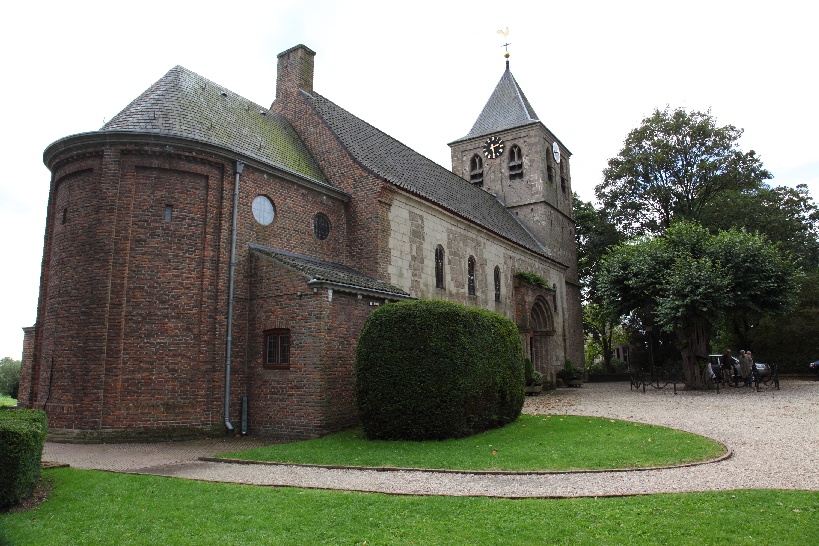 The old church was an important defence position. It is also called the Lonsdale church, after the commander who had taken charge of the soldiers fighting in the area. The church as well as the tree in front of it still show the marks of heavy damage. The house to the right of the church was the house of Kate ter Horst. It was used as an emergency hospital. Kate is known for the impressive way in which she helped to take care of the wounded. During the night of the 25th to 26th of September 1944 the 1st Airborne Division withdrew from the perimeter. The code name for this operation is: Berlin. While the wounded who had to be left behind kept shooting in order not to arouse the suspicion of the enemy, the troops who were able to walk marched past the church to the riverbank of the Rhine. There they were taken to the other side of the river by small boats. This enabled these soldiers to return to their own lines. | ||||||||||||||||||||||||||||||||||||||||||||||||||||||||||||||||||||||||||||||||||||||||||||||||||||
| G | Waypoint | St. Elisabeths Hospital | ||||||||||||||||||||||||||||||||||||||||||||||||||||||||||||||||||||||||||||||||||||||||||||||||||
On our way to the bridge we arrive at the former St. Elisabeths Gasthuis, a civilian hospital which was put into use as a military hospital.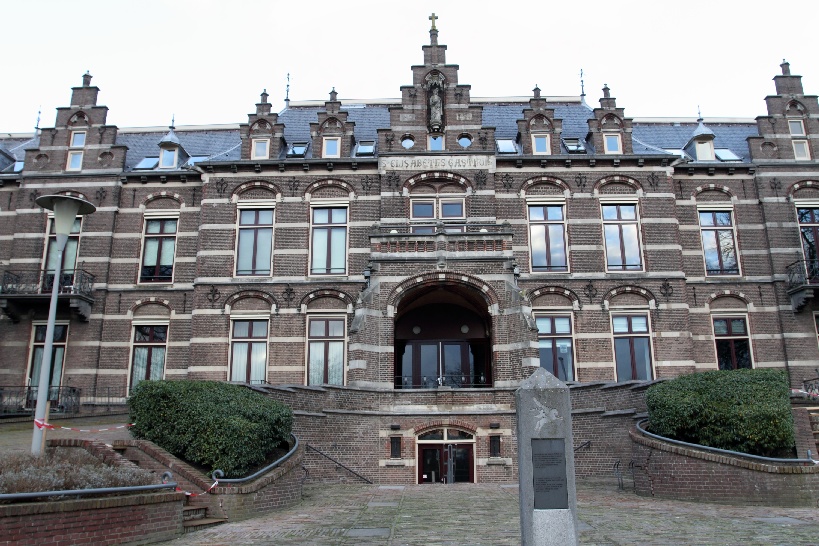 The street left of the Elizabeths Gasthuis is called Zwarteweg. Generaal Urquhart together with Lieutenant Cleminson and Captain Taylor were forced to hide a long time in the attic at number 14 after having run into the enemy while on patrol. | ||||||||||||||||||||||||||||||||||||||||||||||||||||||||||||||||||||||||||||||||||||||||||||||||||||
| H | Waypoint | John Frost Bridge | ||||||||||||||||||||||||||||||||||||||||||||||||||||||||||||||||||||||||||||||||||||||||||||||||||
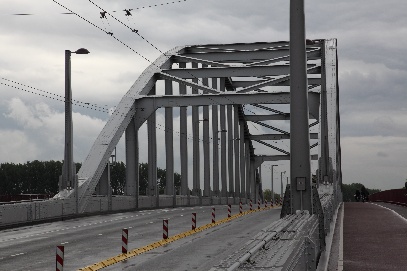 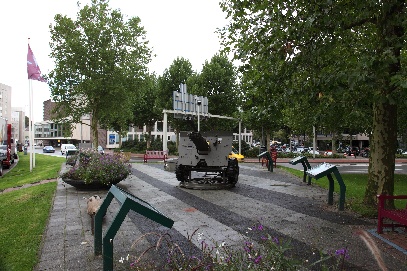 The John Frost bridge and the Jacob Groenewoud plantsoen (public garden) This bridge was the main target of the Battle of Arnhem. Only a limited number of airborne troops would reach the bridge, about 700 men in total. They were under the command of Lieutenant-colonel John Frost, commander of 2nd battalion. After the first day the German counter attack prevented the arrival of reinforcements to the bridgehead. After having fended off several attacks on the British positions, the airborne troops were forced to surrender here on 21 September 1944. 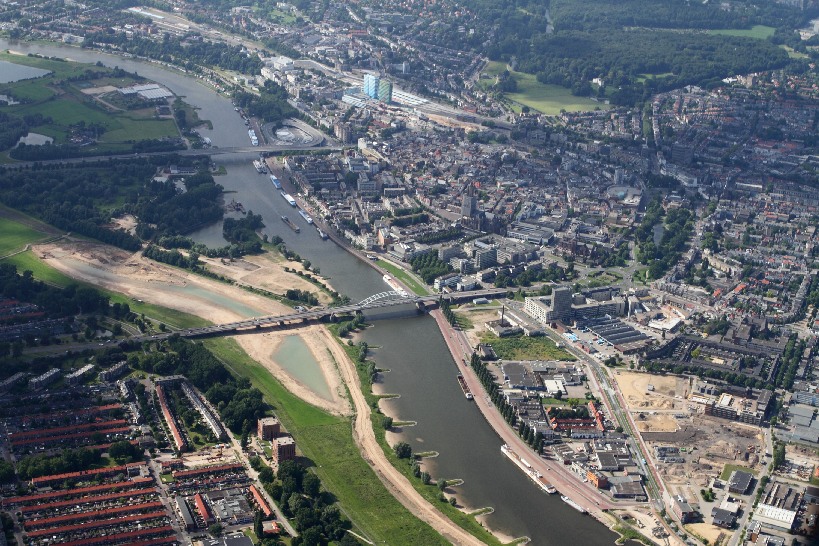 On the bridge and its surroundings there are several points of interest, plaques and memorials to be found. The bridge itself had gotten so heavily damaged during the war that it had to be rebuilt after the war. There is an information centre near the bridge which works in close cooperation with the Airborne Museum in Oosterbeek. For those who have already visited or are planning to visit the Airborne Museum, the information centre will offer no additional information. The centre was created because a lot of people know the story of the bridge, but are unaware of the fact that it is an important part of the Battle of Arnhem which took place in Oosterbeek. | ||||||||||||||||||||||||||||||||||||||||||||||||||||||||||||||||||||||||||||||||||||||||||||||||||||
| I | Waypoint | Commonwealth War Cemetery Arnhem Oosterbeek | ||||||||||||||||||||||||||||||||||||||||||||||||||||||||||||||||||||||||||||||||||||||||||||||||||
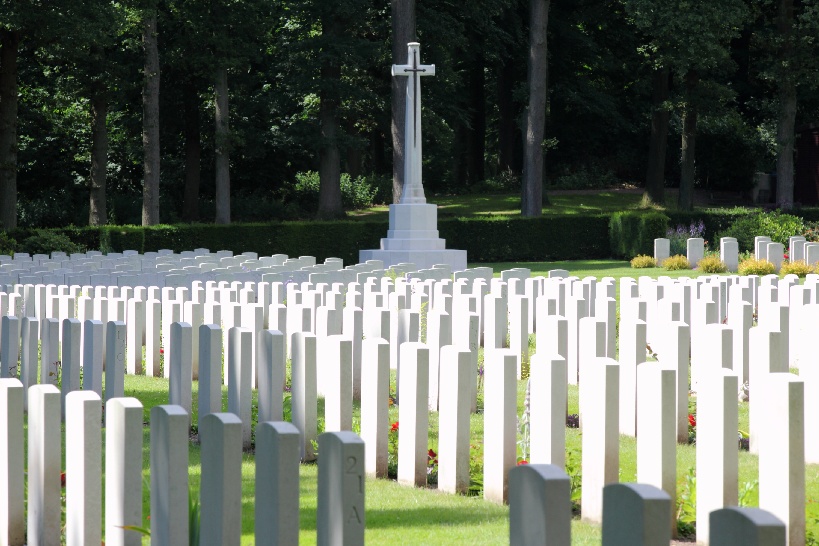 Over 1800 of the soldiers who perished during the Battle of Arnhem are buried at the Airborne cemetery. During the Sunday morning of the annual remembrance weekend a service is held here. For most veterans still able to attend the commemorations this is the highlight of this weekend. 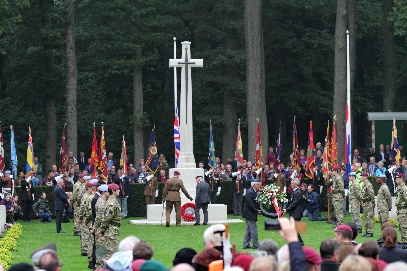 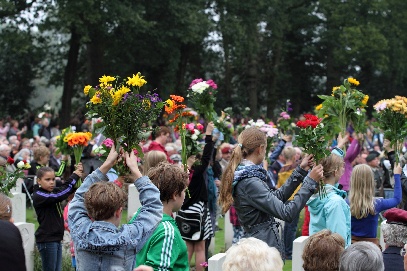 At the end of the service schoolchildren lay flowers on the graves. A tradition which started as early as 1945. Just behind the cemetery is the Air Despatch Monument. The Air Despatchers were the servicemen who very quickly had to drop the loads during the resupply missions. A dangerous job which caused many of them to lose their lives. The despatchers were not RAF staff. Usually they were drivers who were temporarily unemployed. Initially they got not much appreciation for their efforts. This memorial makes up for this fact. 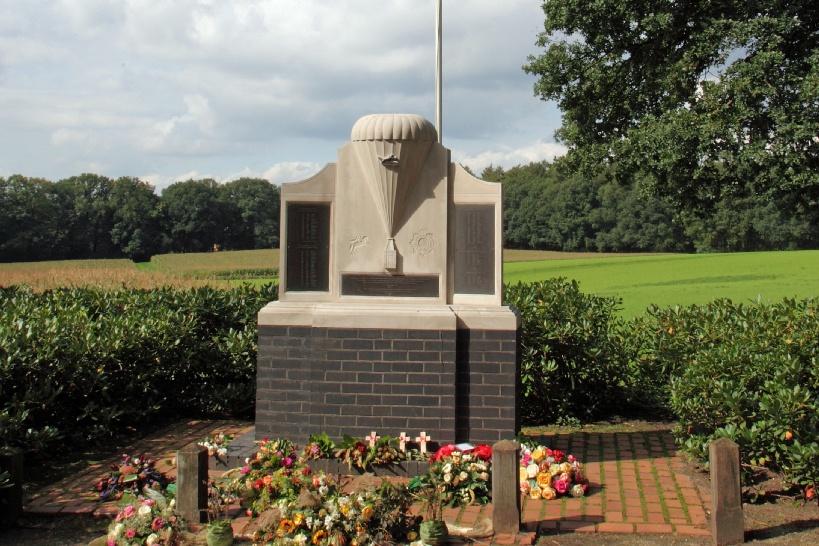 | ||||||||||||||||||||||||||||||||||||||||||||||||||||||||||||||||||||||||||||||||||||||||||||||||||||
| J | Eindpunt | Airborne Museum 'Hartenstein' | ||||||||||||||||||||||||||||||||||||||||||||||||||||||||||||||||||||||||||||||||||||||||||||||||||
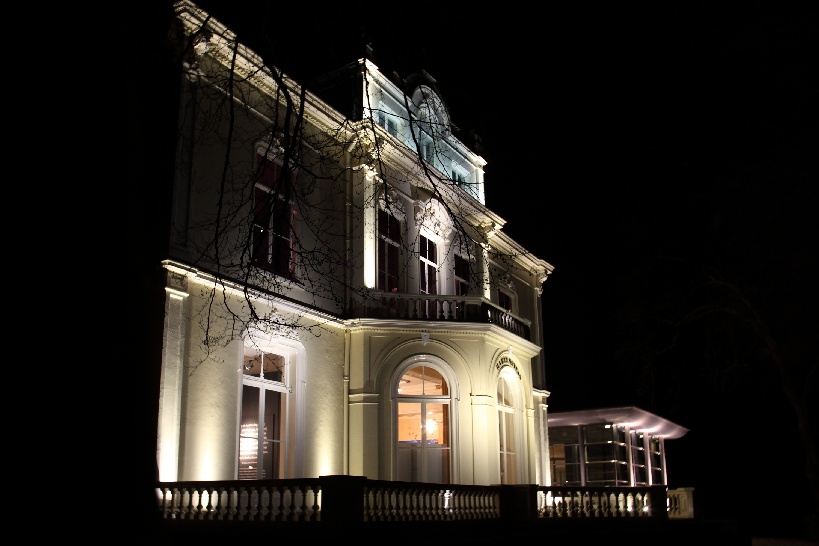 This museum about the Battle of Arnhem makes history come alive. The museum is located in the impressive 19th century Villa Hartenstein, used as the British headquarters during the Battle of Arnhem. In this attractive and contemporary museum the stories of the British, Polish and German soldiers as well as the terrifying stories of the civilians come alive. It offers an extensive collection of authentic weapons, documents, films and photographs. In the award-winning Airborne Experience you can imagine yourself right in the middle of the battle. This underground exhibition offers an overwhelming experience of the course of the battle. 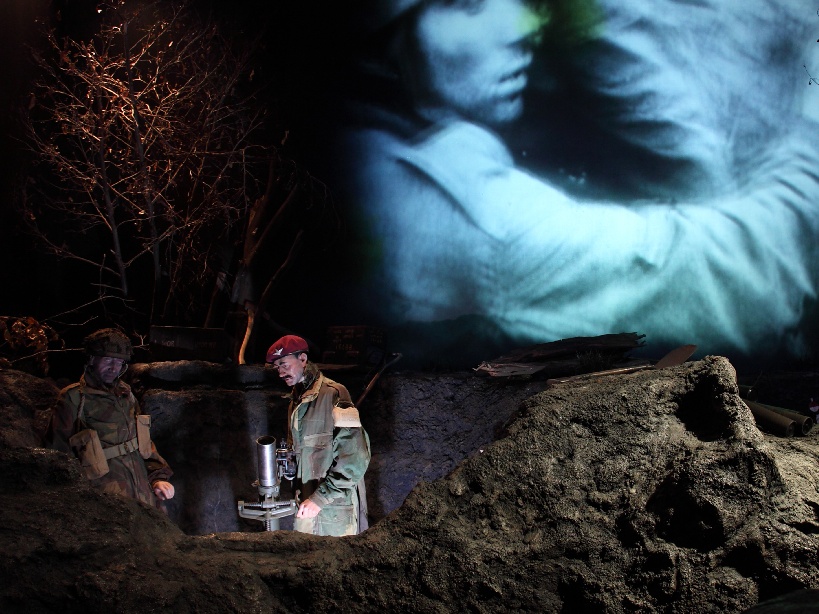 You can actually feel the impact of the violence on the young boys who were desperately fighting for their lives. You follow the footsteps of the British paratroopers through the fuselage of a glider while through the windows you can see the actual take-off in England and the flight towards occupied Holland. Suddenly you are amidst heavy fighting in the streets of Arnhem. You come close the Arnhem bridge. And you follow the retreating troops back to the oppressing area around Hotel Hartenstein in Oosterbeek. Finally you withdraw over the Rhine. Around the museum there are several memorials and points of interest in relation to the Batlle of Arnhem. Source text: Go2war2.nl, Airborne Museum "Hartenstein" and Arjan Vrieze Source photographs: Arjan Vrieze | ||||||||||||||||||||||||||||||||||||||||||||||||||||||||||||||||||||||||||||||||||||||||||||||||||||

